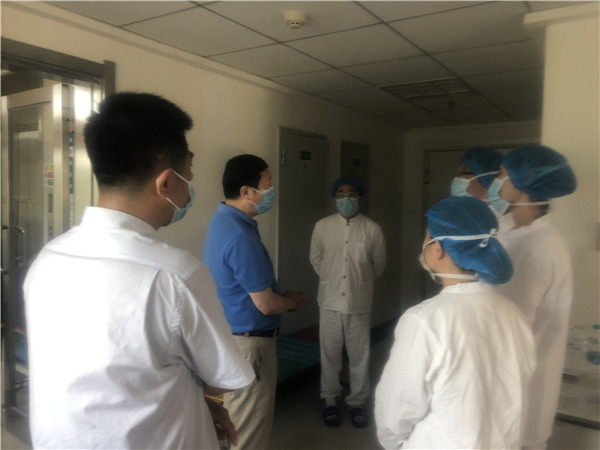Experiential learning
By Li Yingxue | China Daily | Updated: 2020-08-31 07:30

On Jan 21, Wang underwent a nucleic acid test and was confirmed to be infected with COVID-19. He was transferred to hospital later that day.
His doctor recommended the use of HIV drugs, which combine lopinavir with a low dose of ritonavir, which reduced Wang's fever within a day.
Wang recovered and was discharged nine days after he was hospitalized.
The World Health Organization subsequently stopped the trial of lopinavir/ritonavir on hospitalized COVID-19 patients in July, because the interim trial results showed that, when compared the standard of care already being provided by hospitals, the drugs produced little or no reduction in the mortality of those infected.
"I was lucky that the drugs worked on me, but it did have side effects, like muscle weakness," Wang says.
A new disease
On Jan 10, Wang told China Central Television that the outbreak was controllable, which caught the public's attention.
He shared the fact that he had become infected through the eyes on Sina Weibo, sending a warning to both the public and medical workers about the importance of eye protection.
After the investigation in Wuhan, Wang presented his conclusions and suggestions to the National Health Commission, some of which have been applied in the ongoing prevention effort.
One of his suggestions at the time was to pay attention to patients in the cities around Wuhan. "Back then, all the focus was on the outbreak in Wuhan, but the city is the capital of Hubei province and it was about time of Spring Festival with greater movement among the population, so I noted that the cities around Wuhan should also be concerned," Wang says.
Wang also suggested speeding up the detection process of the virus so that patients could be diagnosed as soon as possible.
"I saw the doctors and nurses getting exhausted in Wuhan. They were short-handed and under high pressure," Wang recalls. "I suggested beefing up the quota of medical staff in Wuhan, as well as shortening their shifts.
"The usual 8-hour shift was too long for them to be working in protective clothing, and if they were too exhausted, their immunity might decrease and make them more vulnerable to infection," he says.
After Wang was admitted into hospital, he received the files of 600 COVID-19 patients and was asked to study them. After he was discharged, he devoted himself to his work, shuttling between his hospital and National Health Commission meetings.
Wang now leads a team of 20, and has the further assistance of many experts from different fields, that use artificial intelligence to analyze the cases of COVID-19 patients from around the country.
"We have collected data on more than 70,000 cases, including around 15,000 cases that have full reports, which is a lot of work to do," Wang says.
As a former COVID-19 patient, Wang has gained more knowledge and experience about the virus. As a doctor and a public health expert, Wang says in light of the current pandemic, doctors should shoulder some responsibility concerning public health.
"The doctors in Wuhan have done a good job in identifying this new, infectious disease, but we still need to strengthen the awareness and vigilance among doctors," Wang says.
























